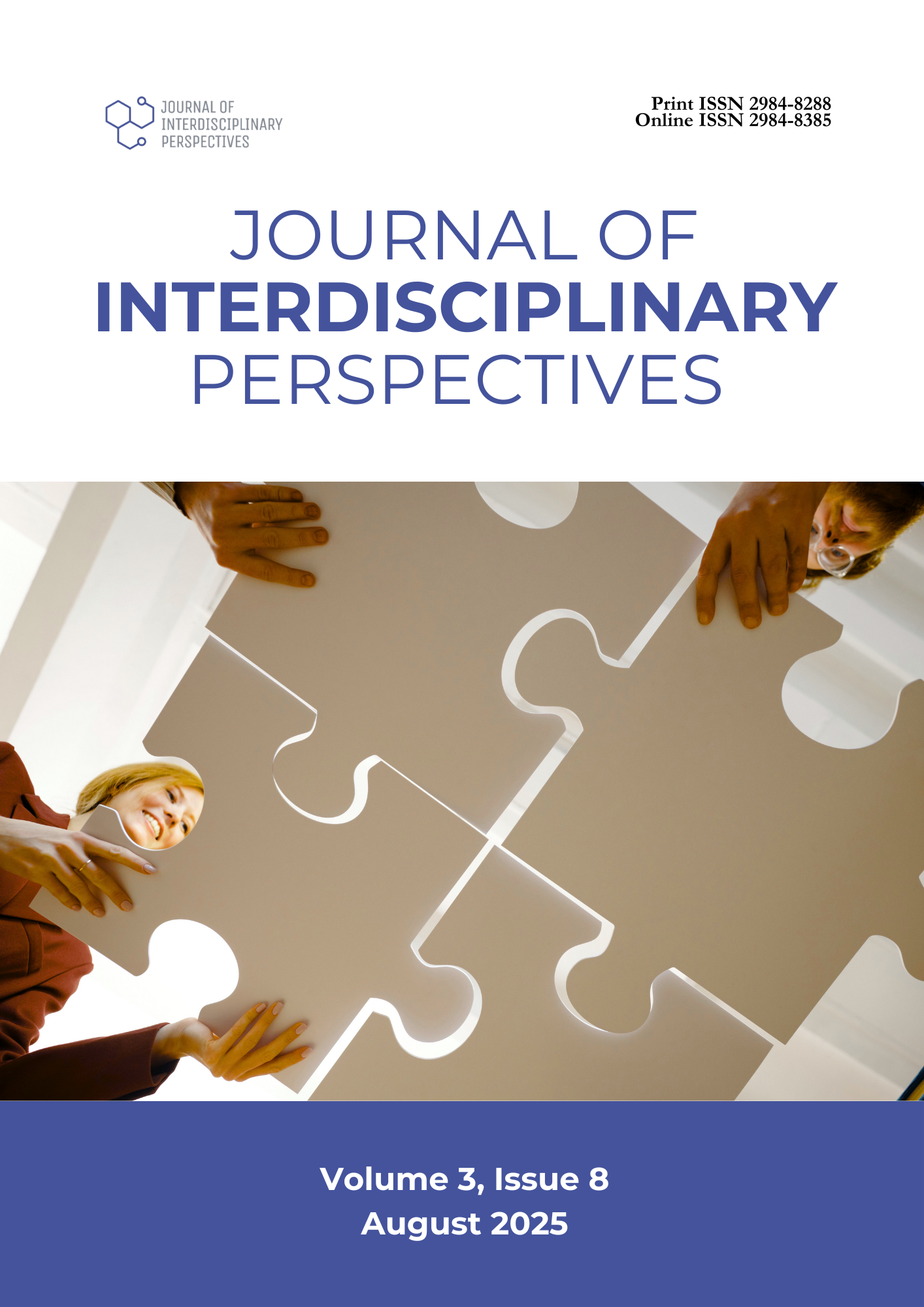Stuttering in the English Language among College Students: A Multiple Case Study
DOI:
https://doi.org/10.69569/jip.2025.508Keywords:
College students, English language, Oral constraints, Self-efficacy, StutteringAbstract
This multiple case study investigates the challenges and coping mechanisms of college students who experience stuttering when speaking the English language, addressing a gap in understanding how speech fluency issues affect academic and social participation. Guided by Albert Bandura’s Self-Efficacy Theory, the study aimed to explore how students’ belief in their capabilities influenced their ability to manage stuttering. Three participants from Davao Del Sur State College, each with varying degrees of stuttering severity, were purposefully selected. A qualitative approach was used, employing semi-structured interviews and thematic analysis to examine their experiences. The results revealed that stuttering commonly leads to verbal communication barriers, triggering social anxiety, low self-esteem, speech fatigue, and reduced classroom engagement. Participants employed a range of coping strategies, such as breathing techniques, speech therapy exercises, code-switching, positive reinforcement, and avoidance behavior. However, the effectiveness of these strategies varied depending on individual experiences, levels of self-efficacy, and external pressures, such as academic demands. The study concludes that enhancing students’ self-efficacy plays a critical role in helping them manage stuttering and improve participation in English-speaking academic settings.
Downloads
References
Almudhi, A., & Zafar, H. (2023). Self-reported musculoskeletal pain, headache, jaw pain, and swallowing dysfunction in a sample of young Saudi adults who stutter. Journal of the Pakistan Medical Association, 74(1), 32–37. https://doi.org/10.47391/jpma.7264
Alshatti, T., Robb, M. P., Alfoudari, B., & Abdalla, F. A. (2021). Differential stuttering during conversation and oral reading in Kuwaiti-Arabic speakers: A note on diglossia. Clinical Linguistics & Phonetics, 36(6), 515–527. https://doi.org/10.1080/02699206.2021.1928289
Amiruddin, R., Razaq, Y., Satriani, S., Widistari, B., & Khas, S. A. (2022). Speaking skills for English as a foreign language in video-based discussion. ETDC: Indonesian Journal of Research and Educational Review, 1(3), 371–380. https://doi.org/10.51574/ijrer.v1i3.392
Brown, O. (2020). Diaphragmatic breathing for acquired neurogenic stuttering (Master’s thesis). Font Boone University. https://griffinshare.fontbonne.edu/all-etds/152/
Choi, D., Sim, H. S., Park, H. Y., Clark, C. E., & Kim, H. (2020). Loci of stuttering of English- and Korean-speaking children who stutter: Preliminary findings. Journal of Fluency Disorders, 64, 105762. https://doi.org/10.1016/j.jfludis.2020.105762
Dashti, F., Aysha, A. M., & Adey, A. (2021). Why are Arabic adult learners in Kuwait afraid of making mistakes in their English classroom? European Scientific Journal, 17(12), 15–27. https://doi.org/10.19044/esj.2021.v17n12p15
Daymiel, R., Cantina, J., Alipoyo, V. R., Comecilla, M., Patay, A., & Recamara, J. (2022). Anxiety in second language in relation to students’ speaking performance. Spring Journal of Arts, Humanities and Social Sciences, 1(8), 239–251. http://dx.doi.org/10.55559/sjahss.v1i08.41
Gul, N., Sabih-Ul-Hassan, S., & Imran, S. (2022). An exploration of the factors responsible for English language oral fluency problems faced by undergraduate-level students in District Kohat. Journal of Education and Social Studies, 3(2), 95–109. https://doi.org/10.52223/jess.20223205
Ilyas, M., Putri, M. E., & Nurani, I. (2021). Psychological problems encountered by EFL students in speaking class at Universitas Islam Riau. J-SHMIC Journal of English for Academic, 8(2), 140–152. https://doi.org/10.25299/jshmic.2021.vol8(2).7484
Li, W. (2022). Resilience among language learners: The roles of support, self-efficacy, and buoyancy. Frontiers in Psychology, 13, 854522. https://doi.org/10.3389/fpsyg.2022.854522
Pastor, M. D. G., & Miller, R. (2019). Stuttering and anxiety in English as a foreign language learning. Spanish Journal of Disability, 7(1), 87–109. https://doi.org/10.5569/2340-5104.07.01.05
Separa, L. A. C., Generales, L. J., & Medina, R. J. S. (2020). Situational speaking difficulties of English as second language learners in the Philippines. Journal of Southeast Asian Studies, 25(1), 144–167. https://doi.org/10.22452/jati.vol25no1.8
Sønsterud, H., Feragen, K. B., Kirmess, M., Halvorsen, M. S., & Ward, D. (2019). What do people search for in stuttering therapy: Personal goal-setting as a gold standard. Journal of Communication Disorders, 85, 105944. https://doi.org/10.1016/j.jcomdis.2019.105944
Suryani, H., Abadi, A., Tika, H., & Mayazila, W. (2020). Students’ difficulties in speaking English at the second grade of MTs Negeri 1 Bungo. JR-ELT (Journal of Research in English Language Teaching), 4(2), 47–58. https://doi.org/10.30631/jr-elt.v4i2.53
Ugalingan, T. P., Bawa, L. S., Carpisano, R. A., Akmad, A. S., Mentato, M. G., Manakan, P. D., Datu, S., Ralph, R., & Haron, A. (2023). Speaking English. HAL Archives. https://doi.org/10.5281/zenodo.7951695
Vacalares, S. T. (2023). English-only versus mother tongue: An analysis on students’ fluency and self-confidence. International Journal of Research and Innovation in Social Science, 7(2), 1148–1159. https://doi.org/10.47772/ijriss.2023.7206
Downloads
Published
How to Cite
Issue
Section
License
Copyright (c) 2025 Journal of Interdisciplinary Perspectives

This work is licensed under a Creative Commons Attribution-NonCommercial 4.0 International License.








